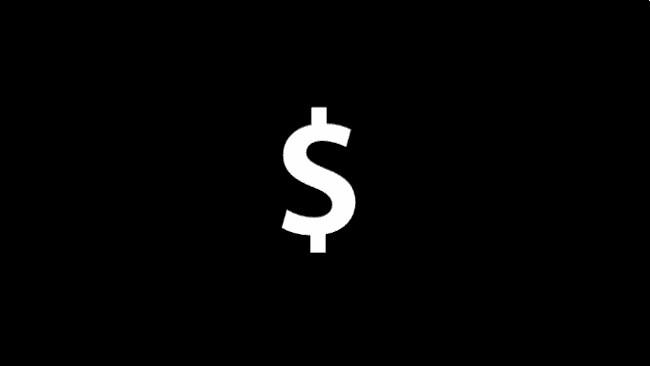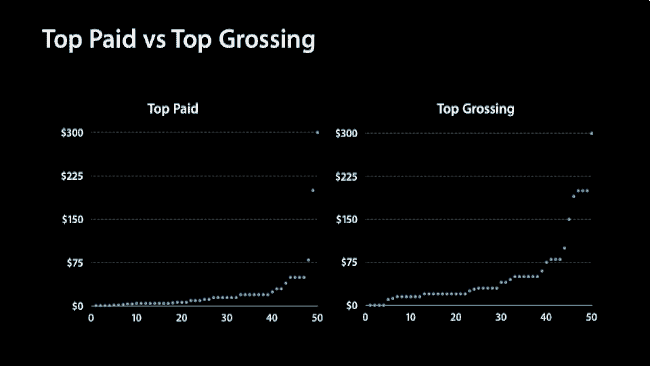Understanding App Store Pricing — Part 1
At Çingleton and NSConference this year I spoke at length about App Store pricing and offered an analysis of the trends, problems, concerns, and recommendations for how to navigate these waters as a developer. At the urging of Craig Hockenberry, I decided to turn these into a series of blog posts so there's a good written record and searchable form of this advice. I hope you enjoy the read.
The Great Fear of App Store Prices
The great fear for many of us in the App Store is the phenomenon of falling prices. We have all experienced the feeling of a "race to the bottom" and many of us have bemoaned the greater inertia we have felt in the market. Our livelihoods, our families, and our future successes are at stake. Unsurprisingly, this has been a consuming thought for many years.
My theory going into this analysis is that the phenomenon of falling prices … has largely been a self-inflicted wound.
With this in mind, I set off to take a look at the Mac software market in particular to try to empirically answer the question, "Does anyone make money in the App Store?" And, "If they do, are they doing anything different or remarkable?". My theory going into this analysis is that the phenomenon of falling prices, as much as we would like to attribute this to the market around us, has largely been a self-inflicted wound. With that in mind, I set out to discover what the data had to say.
It's important to note that this analysis consists of a view of the Mac App Store at just a moment in time (late February to early March). As such, it's entirely possible this data may paint a false picture — a moment frozen in time that, like the first derivative of position, tells me our present velocity, but not if we were speeding up or slowing down. So, take this with a grain of salt and run your own analysis. All of the data I pulled to do these comparisons were based on the iTunes RSS Generator which lets you examine the top content across the various iTunes stores. Take a minute and check it out and you'll see that with these feeds, `curl`, and some simple scripting you can tease out quite a bit of data on your own.
OK, so back to the data. There are two sets of data that are particularly important to our analysis: the Top Paid list and the Top Grossing list. Each list is pretty straight-forward — Top Paid are apps that cost money and are downloaded most often, while Top Grossing are the apps that are making the most money. All things being equal, being on the Top Grossing list is a whole lot better than being on the Top Paid list. Top Grossing is the list that makes money. Money is the lifeblood of your business. Making lots of money by building great products (emphasis on great products) should be your overriding goal in development. If you aren't here to make money, that's fine, but if you aren't already independently wealthy or sustaining yourself in some other way, you probably won't be in business for long.
So as we look at these lists, what do we discover? The average price of an app on the Top Paid 50 apps was $12.46. The median price, so the price in the very middle, of the Top Paid list was $6.99. Ouch. Twelve bucks? Seven bucks? Those don't seem like big, sustainable numbers.
But what about the Top Grossing 50 apps? How did they play out? Well the average selling price on the Top Grossing list was $49.13. The median selling price was $29.99. Fifty bucks and thirty bucks. That is a huge difference! But one of the first things to ensure is that we aren't being led astray by bad averages — things like a few stray extreme prices could easily color our data, so this sounds like a great opportunity for a graph.
Top Paid vs. Top Grossing, with removed outliers, and a loose trend-line for emphasis. Data is ordered from lowest price to highest, not App Store ranking.
So we can see that both Top Paid and Top Grossing have some interesting outliers, so for the sake of a consistent view of the data I've normalized it to $80 as the maximum price so we can look at the shape of these graphs. It should be clear to see that there is a solid accumulation of apps in the lower price tiers on the Top Paid graph, whereas the Top Grossing hits the $20 price tier after only 10 apps and steadily rises from there. It would seem there really is a substantial difference between this data. In fact, if we take a look at the percentages, apps on the Top Grossing list are, on average, 294% more expensive than apps on the Top Paid list. Meanwhile, the median price of an app on the Top Grossing list (again, the middle of the dataset) is 329% more expensive than the Top Paid list.
Apps on the Top Grossing list are, on average, 294% more expensive than apps on the Top Paid list…
The median price of an app on the Top Grossing list … is 329% more expensive than the Top Paid list.
The percentage difference between average and median prices on the Top Paid and Top Grossing lists on the Mac App Store
This price difference is the sweet, sweet sound of developers paying their bills, building sustainable businesses, and creating a business that has a reasonable expectation of servicing its users for years to come. So what have folks on the Top Grossing list figured out that people on the Top Paid list have not? How can they get away with charging nearly 300% more money? We'll take a look at some possible answers to that question, and a valuable lesson in Economics in the next part.


